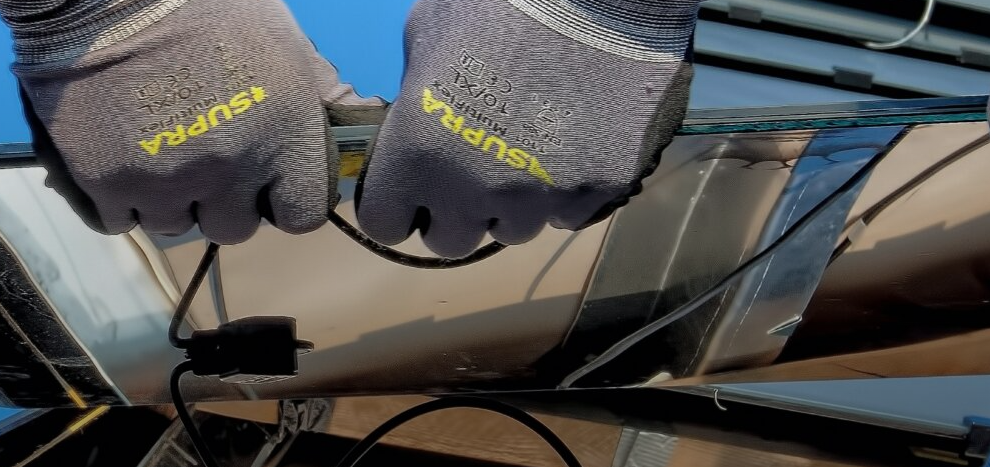
As utilities strive to incorporate more Distributed Energy Resources (DERs) into the grid, the need for effective management platforms has become increasingly apparent.
Advanced Distribution Management Systems (ADMS) have traditionally been the go-to solutions for utilities and implementations (for first-timers) and upgrades (for those already with a Distribution Management System or ADMS) are core parts of many utility rate cases today.
But the growing challenges, opportunities, and complexities of DER integration are increasingly being met with a dedicated DER Management System (DERMS) to complement an ADMS. Dedicated DERMS platforms are being implemented by utilities today with greater capabilities and more use cases being rolled out over the coming years.
So, let’s delve into the key points differentiating ADMS and DERMS and what this means for project developers and DER asset owners, and why they may require connection to both the utility ADMS and DERMS. Where a utility has neither ADMS nor DERMS then the control connection to DERs will likely be through the Supervisory Control and Data Acquisition (SCADA) system that provides the utility with the necessary telemetry and telecontrol over larger DER installations. SCADA is commonly regarded as a key backbone capability within an ADMS.
So, the DER site is monitored and managed by the utility in accordance with the interconnection agreement terms and for any additional services or programs that the DER provides to the utility or through the utility grid to the wholesale electricity market.
At its core, an ADMS is designed for network monitoring, switching some automated responses, outage management, and grid maintenance. In contrast, a DERMS is built to handle the wide variety of ways that DERs interact with the network and the market.
Ultimately, it’s about using the right tool for the right job. If a utility relies on an ADMS to control DERs then it’s going to be using state estimation techniques and periodic load flow simulations – limitations from incomplete and not fully accurate network models and asynchronous datasets will result in compromises in how effective these forms of grid analytics can be in delivering direct real-time control of DERs. That’s why DERMS have the breadth of calculation methods, interfaces, architectures, functions, and features needed to properly control DERs.
If ADMS and DERMS provide DER compliance with the interconnection terms, they also provide the utility with a means of managing compliance with the physical and statutory limits of the public electric grid system and relevant regulatory and reliability standards. ADMS will typically manage grid switching and outages, customer information, network measurements, and automated network control activities, typically related to fault location and supply restoration. DERMS complements this by managing grid services from DER and customers, DER operating schedules, and revenue-generating programs for customers such as Demand Response.
In the future, DERMS is likely to be the gateway for DER asset owners to access the wholesale market under the Federal Energy Regulatory Commission’s (FERC’s) Order 2222, with the ability to create and use forecasting, optimize schedules, and enable DER revenue stacking. DERMS will give DER owners the chance to take part in both the retail and wholesale markets, generating more or less power in response to instructions from utility companies, as well as participating in Independent System Operators’ (ISOs’) capacity, energy, and reserve services.
DERMS also lies at the heart of Non-Wires Alternatives (NWA), allowing power production to be increased or decreased in response to local grid supply and demand, avoiding the need for expensive physical infrastructure upgrades that would otherwise be required to cope with rare peaks in utility demand. NWA are being implemented by many utilities and are a further source of additional revenues for DER.
For project developers, using a dedicated DERMS instead of an ill-suited ADMS means lower renewable export curtailment under flexible interconnection arrangements.
A DERMS also gives project developers the chance to participate in more complex and dynamic markets, giving them access to the data needed to interface with curtailment forecasts and manage day-ahead market participation. If DERs are located on industrial or commercial sites then DERMS give developers the data they need to decide whether to use power for their own purposes on site, store it, or sell it to the wider market. Depending on the revenue stacking and schedule optimization capabilities of the system, revenues from grid and utility services and wholesale markets can then be maximized.
As well as utility DERMS acting as the gateway to the utility grid and programs and wholesale markets for DER projects, the same underlying technology – but delivered in different systems – is used directly by DER project developers, operators and aggregators to manage portfolios of DER. This asset portfolio management opens the door to DER aggregation and the creation of what’s in effect a Virtual Power Plant (VPP).
That management could include controlling devices ranging from grid-scale solar photo-voltaic (PV) arrays and battery energy storage systems (BESS) to electric vehicle (EV) chargers, heat pumps, smart thermostats, and air conditioners. The operation of these assets can be scheduled, optimized, and monitored to make sure they not only deliver services to the site but also maximize revenue in markets, by either sending power to or drawing power from the grid.
Utility companies will guide project developers and DER asset operators on how they propose to connect their projects to the grid and then manage their operations. It’s crucial for developers and operators that the right combination of DERMS and ADMS is used to make sure that the network interconnection is as effective as possible but also that the opportunities that arise from the new markets and revenue streams are enabled. Having a dedicated DERMS instead of making do with a plug-in module for an ADMS will give DER owners the opportunity to maximize their revenues as the U.S. races to meet its 2050 net zero target.